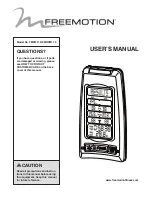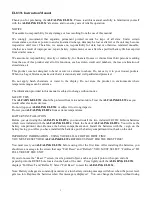
Selecting & Playing Voices
NP-30/YNP-25
Owner’s Manual
18
Selecting & Playing Voices
Selecting Voices
1.
While holding down the [GRAND PIANO] button,
press one of the C1–A1 keys to select a voice.
Pressing the
VOICE/SONG [BACK<<] or [>>NEXT]
button switches among the following ten voices.
2.
Adjust the volume.
Re-adjust the
[MASTER VOLUME]
slider for the most comfortable listening
level during your performance.
C1
A1
C1
A1
To familiarize yourself with the
characteristics of the voices, lis-
ten to the demo songs for each
voice (page 14).
TERMINOLOGY
Voice:
On the NP-30/YNP-25, the term
“voice” means “instrument
sound.”
When you select a voice, an
appropriate reverb type will be
selected automatically (page 20).
NOTE
NOTE
Key
Voice Name
Description
C1
Grand Piano 1
Recorded samples from a full concert grand piano. Perfect for clas-
sical compositions as well as any other style that requires acoustic
piano.
C
#
1
Grand Piano 2
Clear piano with bright reverb. Good for popular music.
D1
E. Piano 1
An electronic piano sound created by FM synthesis. Good for
popular music.
D
#
1
E. Piano 2
The sound of an electric piano using hammer-struck metallic “tines.”
Soft tone when played lightly, and an aggressive tone when played
hard.
E1
Church Organ 1
This is a typical pipe organ sound (8' + 4' + 2'). Good for sacred music
from the Baroque period.
F1
Church Organ 2
This is the organ’s full coupler sound, often associated with Bach’s
“Toccata and Fugue.”
F
#
1
Strings
Spacious and large-scale string ensemble. Try combining this voice
with piano in DUAL.
G1
Harpsichord 1
The definitive instrument for baroque music. Since the strings of a
harpsichord are plucked, there is no touch response.
G
#
1
Harpsichord 2
Mixes the same voice an octave higher for a more brilliant tone.
A1
Vibraphone
The sound of a vibraphone played with relatively soft mallets.
















































